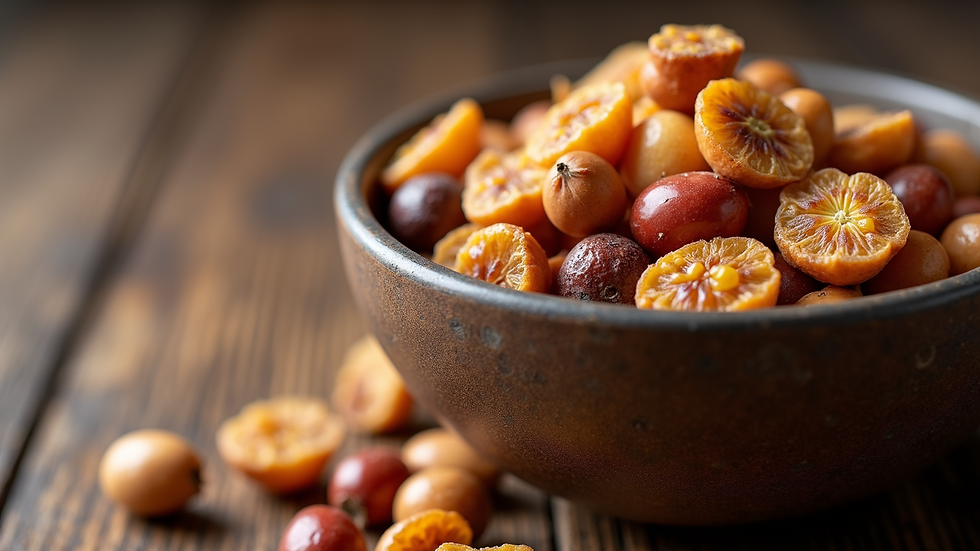India's Dry Fruits Market Faces Uncertainty Amid Border Closure with Pakistan
- jstamitkareer
- May 24
- 3 min read
India, celebrated for its rich culinary heritage, has a special place for dry fruits. Almonds, cashews, pistachios, and walnuts are not just ingredients in traditional sweets; they are also key components of a healthy diet. However, the recent closure of borders with Pakistan has sparked concerns about the future pricing of these cherished dry fruits in India.
India imports around 40% of its dry fruits from Pakistan, where conditions favor the growth of various nuts. This sudden border closure has disrupted the supply chain, causing ripples of uncertainty in the market.
The Impact of Border Closures on Dry Fruit Prices
The border closure is already affecting prices. Importers are facing delays and increased transportation costs, which they are likely to pass on to consumers. For example, demand for dry fruits typically surges during festive seasons, further straining an already challenged supply.
With the bulk of almonds imported from Pakistan, any disruption could lead to significant price hikes. Reports suggest that prices have already increased by approximately 15% in recent weeks. Consumers may soon find themselves paying considerably more for essential dry fruits, which play a vital role in many Indian dishes.

Domestic Alternatives and Their Effect on the Market
To counteract potential shortages, Indian farmers may increase production of local varieties of dry fruits such as cashews and desi nuts. However, this transition will take time and effort.
For example, local cashews can be cheaper and more accessible than imports, but research shows that nearly 70% of consumers prefer imported varieties due to their taste and quality. Convincing consumers to switch to local options will require significant marketing efforts. Ensuring that local varieties maintain a high standard of quality will be imperative for consumer acceptance and market stability.
Market Reaction and Trends
Market analysts are keenly monitoring consumer behavior in response to these changes. If consumers remain loyal to their favorite imported varieties, local farmers may find it difficult to meet demand. Conversely, if consumers are more open to alternatives, local nuts could gain a substantial market share.
Moreover, if prices continue to rise, overall consumption might dip. A recent survey indicated that nearly 30% of consumers would cut back on buying dry fruits if prices exceed their budget. Balancing supply and strategic pricing will be critical for everyone involved.

Long-term Implications for Trade Relations
The ongoing border situation raises important questions about India-Pakistan trade relations, particularly for agricultural products. Policymakers must handle this issue carefully to avoid inflaming tensions further while addressing both nations' needs.
This scenario highlights the need to diversify trade routes for agricultural imports. If Pakistan remains off-limits, Indian traders may look to countries like Afghanistan or Iran for dry fruit supplies. This shift could fundamentally change market dynamics in the coming years.
As conditions evolve, discussions about trade policies and import regulations will gain importance. Establishing robust frameworks can help mitigate geopolitical risks and ensure steady supply.
Consumer Awareness and Adaptation
In these uncertain times, consumer awareness is crucial. Shoppers need to stay informed about potential price increases and explore available alternatives. Knowledge about the nutritional benefits and culinary uses of various nuts can empower consumers to make informed choices.
Retailers can play a significant role by sharing information on pricing trends and showcasing local products. Fostering an understanding of health benefits can also help shift consumer preferences towards alternatives.
Navigating Change in the Market
The border closure between India and Pakistan has brought uncertainty to the dry fruits market, with rising prices on the horizon. Whether consumers will embrace local varieties remains unclear, but diversifying trade options and fostering consumer awareness will be crucial.
A proactive approach from both consumers and farmers can lead to market equilibrium, ensuring not only the availability of dry fruits but also the preservation of culinary traditions. As the situation develops, all stakeholders must adapt and innovate, ensuring that the beloved dry fruits remain accessible to everyone.
Although the current challenges are significant, they also present opportunities for local farmers and traders ready to meet consumer needs in creative ways.
.png)









Comments